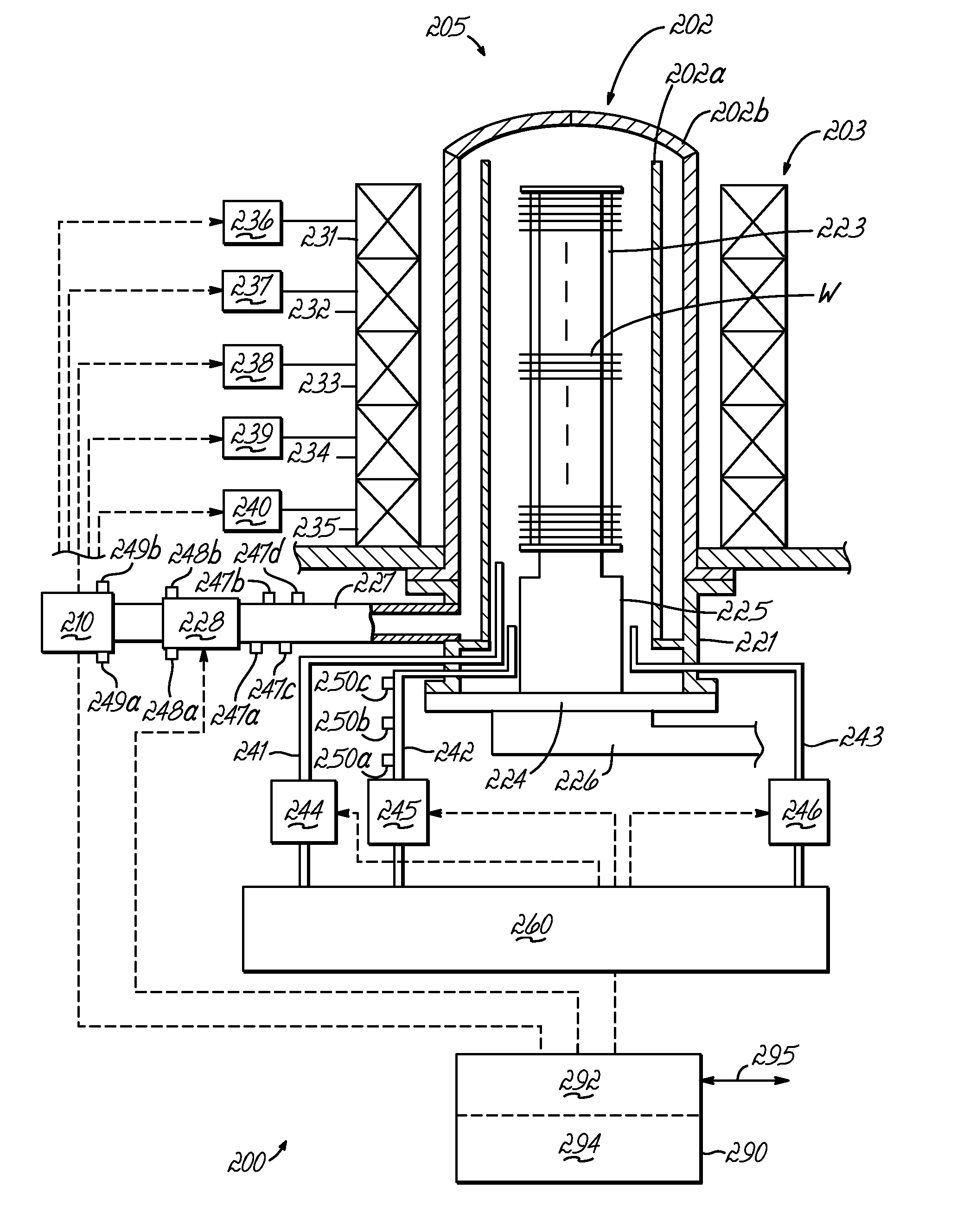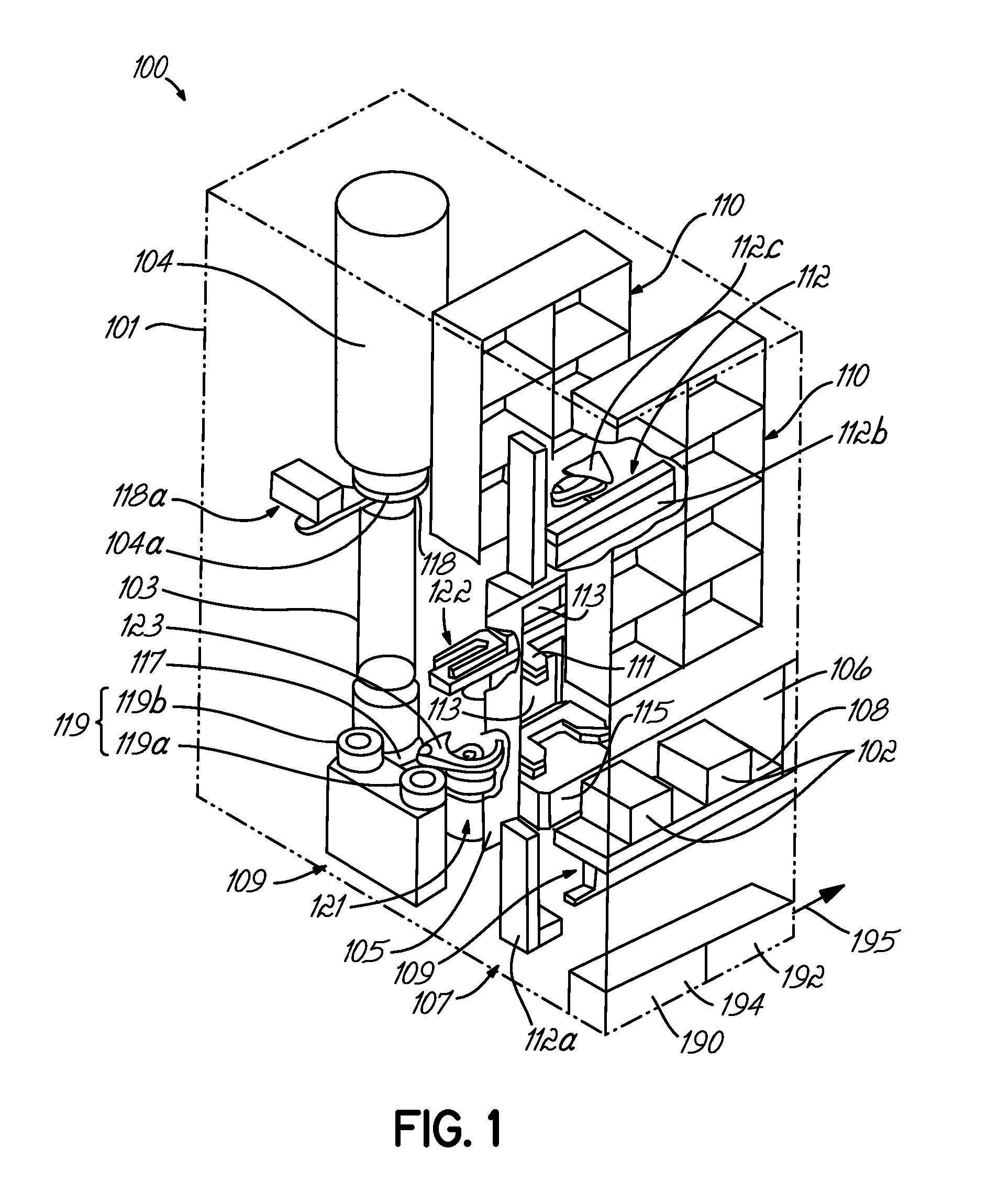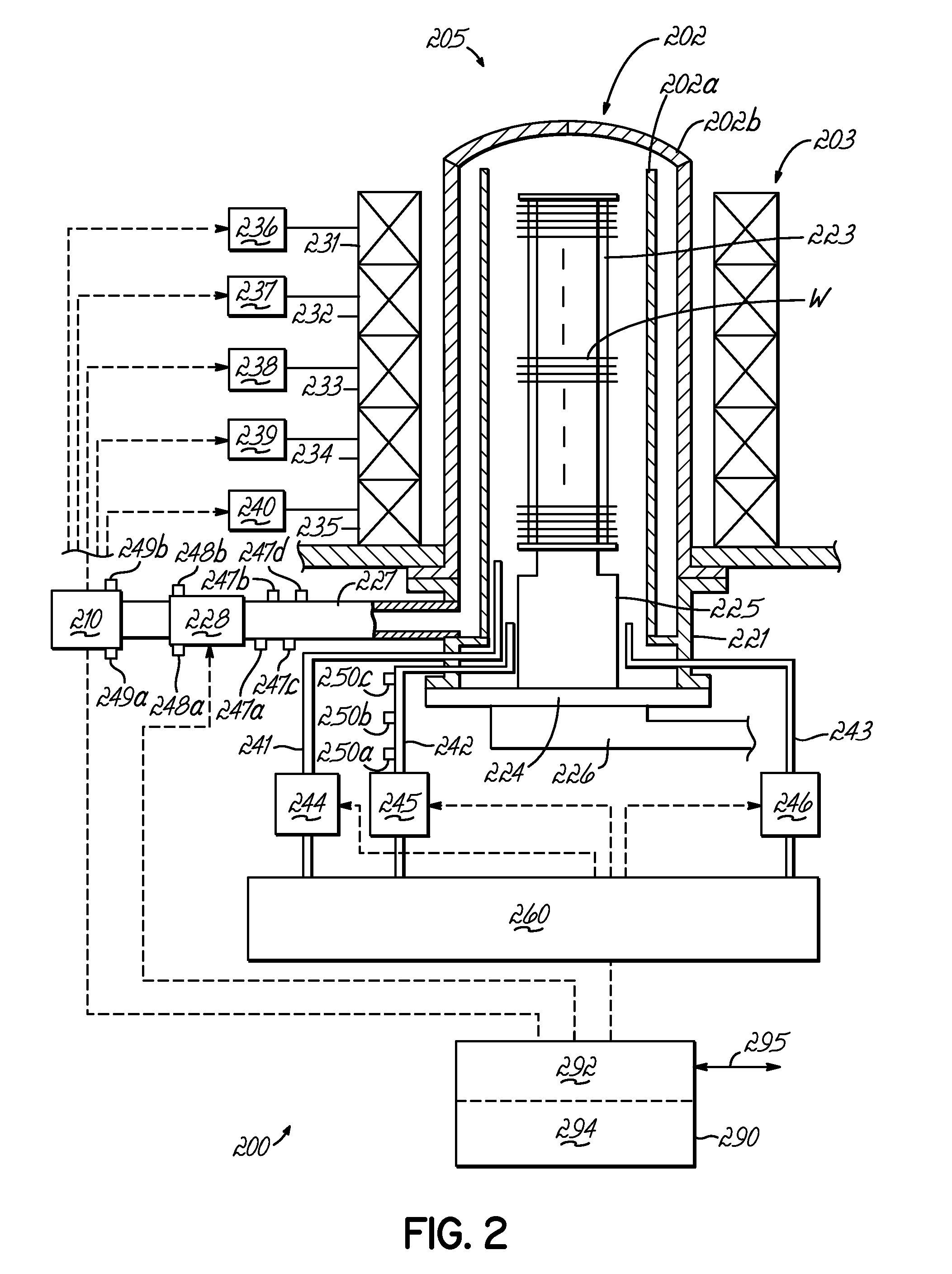Method of monitoring a semiconductor processing system using a wireless sensor network
- Summary
- Abstract
- Description
- Claims
- Application Information
AI Technical Summary
Benefits of technology
Problems solved by technology
Method used
Image
Examples
example
Vibrational Signature of a Gas Line During Process Gas Flow
[0085] Under certain flow conditions, flow of a process gas through gas lines found in semiconductor manufacturing systems (e.g., thermal processing system 200 in FIG. 2), can develop high levels of noise and vibrations. For example, process gas flow through gas supply line 242 or gas exhaust line 227, can excite a standing wave, resulting in vibrations in the gas line that can be greatly amplified if acoustic or structure resonance occurs. A clean gas line may produce a baseline vibrational signature as a process gas flows through the system component, and changes in the vibrational signature of the gas line can indicate a change in the dynamic characteristics of the gas line (e.g., formation of a material deposit in the gas line) and the overall processing system. The changes may be analyzed and compared to a baseline vibrational signature in order to diagnose a drift or a failure in the processing system so that appropri...
PUM
 Login to View More
Login to View More Abstract
Description
Claims
Application Information
 Login to View More
Login to View More - R&D Engineer
- R&D Manager
- IP Professional
- Industry Leading Data Capabilities
- Powerful AI technology
- Patent DNA Extraction
Browse by: Latest US Patents, China's latest patents, Technical Efficacy Thesaurus, Application Domain, Technology Topic, Popular Technical Reports.
© 2024 PatSnap. All rights reserved.Legal|Privacy policy|Modern Slavery Act Transparency Statement|Sitemap|About US| Contact US: help@patsnap.com










